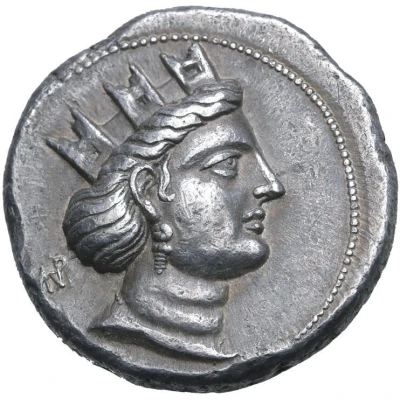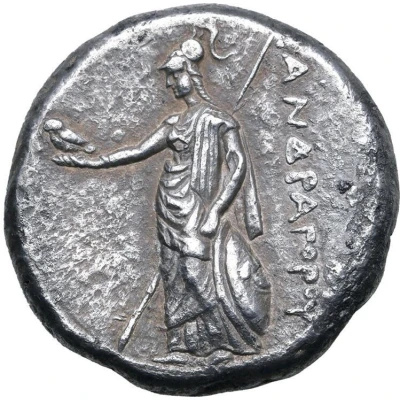


© Roma Numismatics Limited
Tetradrachm - Andragoras 245 BC - 238 BC
| Silver | 16.36 g | 24 mm |
| Issuer | Satrapy of Parthia (Seleucid Empire (305 BC - 64 BC)) |
|---|---|
| Satrap | Andragoras (245 BC - 238 BC) |
| Type | Standard circulation coin |
| Years | 245 BC - 238 BC |
| Value | Tetradrachm (4) |
| Currency | Drachm |
| Composition | Silver |
| Weight | 16.36 g |
| Diameter | 24 mm |
| Shape | Round (irregular) |
| Technique | Hammered |
| Orientation | Variable alignment ↺ |
| Demonetized | Yes |
| Updated | 2024-10-10 |
| Numista | N#72839 |
|---|---|
| Rarity index | 100% |
Reverse
Standing Athena with her owl and armor.
Script: Greek
Lettering: ΑΝΔΡΑΓΟΡΟΥ
Translation: Andragoras.
Comment
Historical detail: Andragoras the Parthian seems to have been a satrap of Alexander from 331 BC in the area of Parthia. According to Justin, he was selected among the noble Persians, and is at the origin of the Parthian dynasty:Andragoras ruled only for a few years, before being vanquished and killed by the Parni led by Arsaces around 238 BCE, who went on to create the Parthian Empire
BMC Arabia, p.193,4
Gorny
Interesting fact
One interesting fact about the Tetradrachm - Andragoras (245 BC - 238 BC) from Satrapy of Parthia (Seleucid Empire (305 BC - 64 BC)) made of Silver weighing 16.36 g is that it features the image of a mythical creature called the "Bactrian camel" on its reverse side. This coin was minted during the reign of Andragoras, who was a satrap (governor) of the Seleucid Empire, and it is believed to be one of the earliest coins to feature this unique design. The Bactrian camel was an important animal in the region and was often depicted in art and literature, symbolizing strength, endurance, and prosperity.